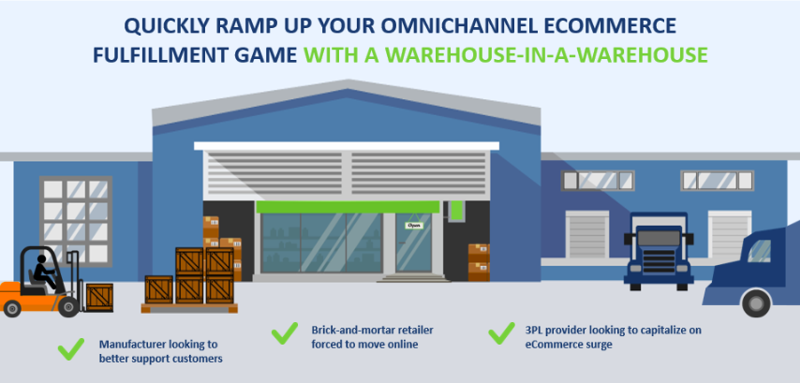COVID-19 has accelerated what was already a well-established trend: a shift from traditional brick-and-mortar retail to eCommerce fulfillment. All supply chain partners, including manufacturers, distributors, and retailers, have been served notice that direct-to-consumer (D2C) omnichannel fulfillment is the new normal that had better be embraced.
While some shoppers are more than willing to don a mask and head to the local shop or national store, a recent survey from SmarterHQ found that while nearly 37 percent of respondents said they would return to stores to shop for “non-essentials,” 26 percent would now prefer to buy primarily online. Apparently shoppers are growing used to the idea that they don’t actually need to squeeze the avocados.
One footwear manufacturing company found this to be true in Asian markets, which are further along on the pandemic recovery curve. Even when they re-opened hundreds of stores, the company found that the surge in their eCommerce division did not subside significantly. Consumers were used to the idea of buying shoes sight unseen.
With more consumers adding fuel to the fire of online shopping seen before the COVID-19 pandemic, being able to ship anywhere, to anywhere, at anytime is more important than ever.
“In the new omnichannel fulfillment model where all supply chain partners are a part of an endless aisle of goods, whoever’s got the inventory will increasingly be called upon by large eCommerce merchants, online retailers, or 3PLs to ship to consumers that are now hunkered down in their homes riding out COVID-19,” said Bob Malley, Managing Director at Pierbridge, during the recent webinar, “Quickly Ramp Up Your Omnichannel eCommerce Fulfillment Game with a Warehouse-in-a-Warehouse.” “The new omnichannel model is less linear. It’s a network with a ship-from-anywhere mentality that requires the ability to handle smaller, more frequent shipments.”
Here is a look at the differences between the traditional fulfillment model and omnichannel:
Traditional model: Linear
- Easier to control
- More inventory at rest
- More full case picking
- Fewer, larger freight shipments
- Lower cost/mile, fewer stops
Characteristics:
- Centralized control over fulfillment
- More inventory at rest held by merchants
- More full case picking
- Fewer and larger freight shipments
- Aggregated pickup and delivery
- Lower cost/mile, fewer stops
Omnichannel model: Network
- Ship from the manufacturer to the consumer
- Ship from the distributor to the consumer
- Ship from merchant’s warehouse to the consumer
- Ship from store to the consumer
Characteristics:
- De-centralized control over fulfillment
- “Endless aisle” of inventory held by others
- More “eaches” picking and packing
- Less aggregated pickup and delivery
- Higher volume of smaller shipments
- Higher cost/mile, more stops
- Capacity crunch
Moving to a warehouse-in-a-warehouse strategy
This shift from brick-and-mortar to eCommerce fulfillment has been made more challenging as many manufacturers' and distributors’ systems were engineered to focus on shipping larger consolidated loads to the next link in the supply chain responsible for deconsolidation. Small package shipping was the exception, an edge case usually occasioned by an “expedited” request. Systems now need to gear up to accommodate smaller, more frequent D2C shipments and their legacy systems are not always up to the task.
“Retailers, warehouses, manufacturers, and distributors are generally geared toward shipping LTL and truckload orders,” said Martin Hespeler, Vice President, Americas, at Microlistics, during the webinar. “Warehouses are now falling into a much more challenging area of providing smaller line item orders to stores for fulfillment, as well as for the last-mile, front porch delivery.”
This is why many supply chain partners are supplementing their legacy systems with a “warehouse-in-a-warehouse” system that can help ease their transition into omnichannel fulfillment. This capability enables supply chain partners to offer D2C drop shipping services to their retail customer efforts to ‘extend’ their inventory, eliminate stock outages, boost sales, and keep consumers coming back.
Watch this on-demand webinar version of “Quickly Ramp Up Your Omnichannel eCommerce Fulfillment Game with a Warehouse-in-a-Warehouse” to learn how to quickly pivot your fulfillment model with a warehouse-in-a-warehouse strategy.
